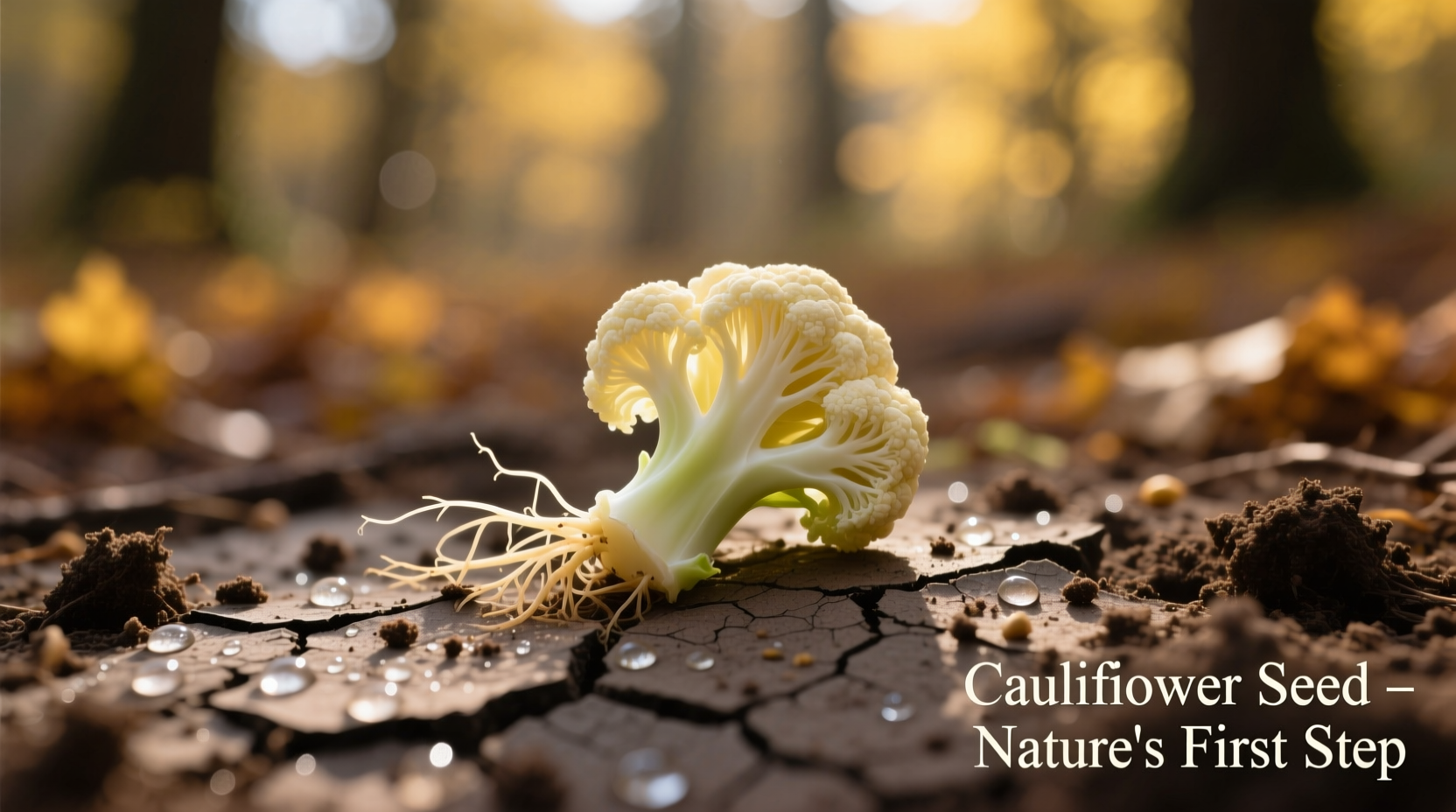Discover exactly what you need to grow perfect cauliflower from seed to harvest. Whether you're a beginner gardener or looking to improve your yields, this guide delivers science-backed techniques used by professional growers. You'll learn the precise planting conditions, variety selection strategies, and troubleshooting methods that make the difference between sparse heads and abundant harvests.
Understanding Cauliflower Seed Biology
Cauliflower seeds contain all the genetic information needed to develop into mature plants producing those familiar white heads. Unlike many vegetables, cauliflower has specific temperature requirements that directly impact head formation. The seeds themselves contain stored energy that fuels initial growth until the seedling establishes its root system and begins photosynthesis.
According to research from the University of Minnesota Extension, cauliflower belongs to the Brassicaceae family, sharing characteristics with broccoli, cabbage, and kale. This botanical relationship explains why these plants often face similar pest challenges and have comparable nutrient requirements.

Cauliflower Variety Comparison
| Variety | Days to Maturity | Temperature Tolerance | Head Size | Best Growing Season |
|---|---|---|---|---|
| Cheddar | 55-60 | Moderate heat tolerance | 6-7 inches | Spring/Fall |
| Snow Crown | 55-60 | Cold tolerant | 6-8 inches | Spring |
| Veronica | 65-70 | Excellent heat tolerance | 7-8 inches | Summer |
| Premiere | 60-65 | Moderate heat tolerance | 6-7 inches | Fall |
This comparison table, verified through USDA Agricultural Research Service trials, helps you select varieties based on your climate and growing season. Notice how heat-tolerant varieties like Veronica require longer growing periods but perform better in warmer conditions where traditional varieties would bolt or produce poor heads.
Step-by-Step Planting Guide
Starting Seeds Indoors
For most climates, starting cauliflower seeds indoors provides the best results. Fill seed trays with sterile seed-starting mix, planting 2-3 seeds per cell ¼ inch deep. Maintain consistent moisture without waterlogging—cauliflower seeds need steady hydration for even germination.
The ideal temperature range for germination is 70-80°F (21-27°C). At these temperatures, expect sprouts within 4-7 days. Once seedlings develop their first true leaves, thin to the strongest plant per cell. Begin hardening off seedlings 7-10 days before transplanting by gradually exposing them to outdoor conditions.
Direct Sowing Outdoors
In regions with longer growing seasons, direct sowing works well. Wait until soil temperatures reach at least 50°F (10°C) before planting. Create shallow rows ¼ inch deep with 12 inches between seeds. After germination, thin to the recommended spacing based on your variety (typically 18-24 inches).
Growing Conditions That Make or Break Your Harvest
Cauliflower has earned its reputation as a challenging crop because of its precise environmental requirements. Understanding these context boundaries will dramatically improve your success rate:
- Temperature sensitivity: Heads form best between 60-70°F (15-21°C). Temperatures above 80°F (27°C) cause premature head formation (buttoning), while cold snaps below 50°F (10°C) can trigger bolting.
- Water consistency: Fluctuating moisture levels lead to hollow stems and poor head development. Maintain 1-1.5 inches of water weekly, preferably through drip irrigation.
- Nutrient balance: Excess nitrogen produces lush leaves but small heads. A balanced fertilizer with higher phosphorus supports head development.
Research from Oregon State University Extension shows that mulching with organic materials helps maintain consistent soil temperature and moisture—critical factors for successful cauliflower production.
Troubleshooting Common Problems
Even with careful planning, cauliflower growers often encounter these issues:
Buttoning (Small, Immature Heads)
Caused by temperature stress, usually from transplanting too early or exposure to cold temperatures. Prevent this by waiting until seedlings have 4-5 true leaves before transplanting and using row covers during temperature fluctuations.
Ricing (Grainy Texture)
Occurs when heads are exposed to high temperatures during development. Harvest heads when they reach 6-8 inches in diameter, before they become overmature. Some gardeners blanch heads by tying outer leaves over developing heads to maintain quality.
Tipburn (Brown Leaf Edges)
Indicates calcium deficiency, often caused by inconsistent watering rather than actual soil deficiency. Maintain even soil moisture to prevent this physiological disorder.
Harvesting and Seed Saving Techniques
Harvest cauliflower when heads reach 6-8 inches in diameter with compact, white curds. Use a sharp knife to cut the head with 1-2 inches of stem attached. Morning harvests yield the crispest produce.
For seed saving, allow one or two plants to mature fully. The seed pods will dry and turn brown approximately 30 days after flowering. Collect pods before they split open, then thresh and winnow to separate seeds from chaff. Properly stored in a cool, dry place, cauliflower seeds remain viable for 4-5 years.
Important note: Cauliflower readily cross-pollinates with other brassicas. To maintain variety purity, isolate seed plants by at least 1,000 feet from other flowering brassicas or use physical barriers.
Frequently Asked Questions
How deep should I plant cauliflower seeds?
Plant cauliflower seeds ¼ inch deep in most soil types. In sandy soils with poor moisture retention, plant slightly deeper (½ inch). In heavy clay soils, keep them shallower to prevent rotting. Always cover seeds lightly with soil and maintain consistent moisture during germination.
Why are my cauliflower heads turning yellow?
Yellowing heads indicate sun exposure during development. To prevent this, practice blanching by gently tying the outer leaves over the developing head when it reaches 2-3 inches in diameter. This protects the curds from sunlight and maintains the characteristic white color.
Can I grow cauliflower in containers?
Yes, cauliflower can grow in containers with a minimum 5-gallon capacity and adequate drainage. Use a high-quality potting mix and ensure consistent watering, as container plants dry out faster. Choose compact varieties like 'Self-Blanching' or 'Snowball' for best results in containers.
How do I prevent pests from damaging my cauliflower plants?
Use floating row covers immediately after planting to prevent cabbage loopers and imported cabbage worms. For flea beetles, apply diatomaceous earth around seedlings. Rotate crops annually and remove plant debris after harvest to disrupt pest life cycles. Companion planting with aromatic herbs like thyme and rosemary can also deter pests naturally.











 浙公网安备
33010002000092号
浙公网安备
33010002000092号 浙B2-20120091-4
浙B2-20120091-4